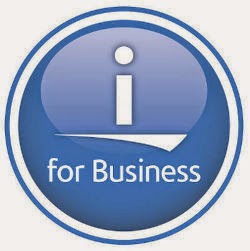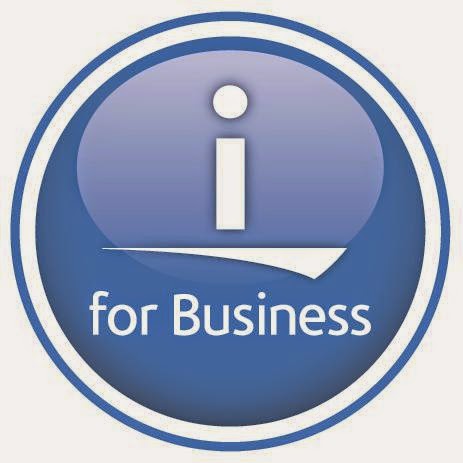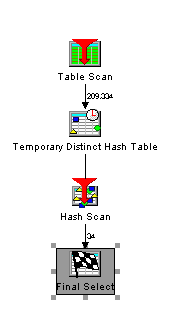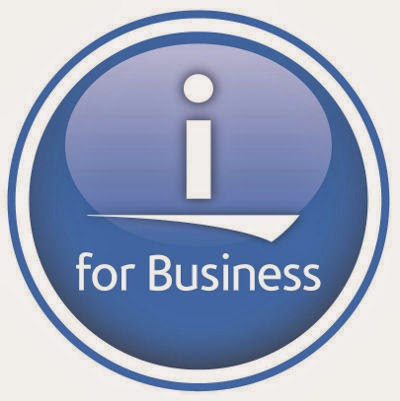One of the disadvantages of DAOS is, that your backup job has to backup many relative small files, which can be a little bit slow on the IBM i. Fortunately IBM has provided some PTF's to improve this situation in the last years.
The biggest improvement can be achieved with the "ASYNCBRING" parameter on the "SAV" command which gets you up to 60 % faster backups of IFS objects. You can find the PTF's needed for V6R1 and V7R1 in the ASYNCBRING Enablement - IFS SAV Performance at V6R1Mx and V7R1M0 technote. In V7R2 the support is available in the base operating system.
To use the ASYNCBRING Support in BRMS (Backup Recovery and Media Service) you need to follow the steps described in the Overriding the ASYNCBRING parameter on IFS saves to improve performance technote.
A blog about information technology. I am especially interested in Java, Eclipse RCP, IBM Notes Domino, Db2 and IBM i
Showing posts with label IBM i. Show all posts
Showing posts with label IBM i. Show all posts
Wednesday, June 18, 2014
Saturday, June 14, 2014
IBM announced a Power 8 iron for the P05 Software tier.
The Power 8 systems announced in early may had only machines with Software tier P10 and P20, but not with the entry software tier P05. The P05 software tier is priced very attractive and so this is the natural choice for many smaller IBM i customers. So i had asked Steve Will on Twitter whether there will be no P05 with Power 8 and he told me that the P05 machine will come later this year.
With the June announcement IBM has now officially announced this 4 core P05 machine.
4-Core Processor Feature
For clients that need fewer than six or eight processor cores in the single-socket
IBM Power System S814 server, a new 4-Core 3.02 GHz POWER8 Processor Card
(#EPXK) is available. There is no upgrade to increase the cores on this feature. This
server supports AIX, IBM i, and Linux, but is especially attractive to IBM i clients
with its P05 software tier. It is designed to meet many entry client requirements with
its 64 GB memory maximum, eight SAS drives in its system unit maximum, and
seven PCIe slots maximum. The IBM i Solution Edition (#4928) and Capacity Backup
option for IBM i (#0444) are supported.
This machine equipped with 4 activated cores, 4 387 GB SAS SSD drives, 4 big slow drives for cold data and 64 GB main storage is an absolute price/performance winner. We have a similar config at our site with 200 heavy ERP User and response times under 0.1 sec.
With the June announcement IBM has now officially announced this 4 core P05 machine.
4-Core Processor Feature
For clients that need fewer than six or eight processor cores in the single-socket
IBM Power System S814 server, a new 4-Core 3.02 GHz POWER8 Processor Card
(#EPXK) is available. There is no upgrade to increase the cores on this feature. This
server supports AIX, IBM i, and Linux, but is especially attractive to IBM i clients
with its P05 software tier. It is designed to meet many entry client requirements with
its 64 GB memory maximum, eight SAS drives in its system unit maximum, and
seven PCIe slots maximum. The IBM i Solution Edition (#4928) and Capacity Backup
option for IBM i (#0444) are supported.
This machine equipped with 4 activated cores, 4 387 GB SAS SSD drives, 4 big slow drives for cold data and 64 GB main storage is an absolute price/performance winner. We have a similar config at our site with 200 heavy ERP User and response times under 0.1 sec.
IBM i Performance FAQ updated.
One of the most valuable source for information's about performance on the IBM i is the "IBM i Performance FAQ" got and update in June. This document contains many hints about performance topics and links to other IBM performance resources like:
- What is Performance?
- How to benchmark performance?
- How to size as system?
- Capacity Planning?
- Proactive Performance Monitoring.
- Performance Data Collectors and Analysis Tools.
- Native I/O
- Compiler Optimization
- Java
- Job and Diskwatcher
Friday, May 23, 2014
IBM thinks that MCH3601 and the creation of dumps is normal behavior during a restore operation
The readers of my blog know, that i am a big fan of the "IBM i" operating system, because it is the most stable and reliable system ever built. We have been using "IBM i" and its predecessor "OS/400" since 1993 and we had only one crash (V3R0M5) of the operating system since then. One other big advantage of the system is that backup and restore is an integrated part of the base operating system so that backup and restore is rock solid too.
Thursday, May 22, 2014
Omit directories from a *LINK BRMS Backup
BRMS (Backup Recovery and Media Service) makes it very easy to backup the complete IFS (Integrated File System) of an IBM i machine, with the "*LINK" entry in your backup control group.
Wednesday, May 14, 2014
Presentation Developing secure IBM i applications
The IBM i is one of the most secure system on earth, but even on the ibm i many mistakes can be made if you do not understand how security has to be implemented on the system. I have found a presentation which explains in detail how security works on the IBM i. This presentation was presented at the January meeting of the Utah IBM i developer association by Robin Tatam. I really recommend this presentation for every Sysadmin and Developer who is interested in security on the IBM i.
Wednesday, April 30, 2014
Analyze IBM i Communication Trace with Wireshark.
One of the most valuable tools to solve problems in networks is the communication trace. Fortunately IBM i has a very powerful trace tool built in the core os, so if you want to trace your network traffic to and from your IBM i you do not need the network guy to implement port mirroring or other network analyzing techniques. But the weak point of the comm trace tool is, that the generated reports are not very easy to view and are a little bit confusing.
So in today's post i want to show you how you can trace your communication and export the traced data to the best open source network traffic analyzer Wireshark:
So in today's post i want to show you how you can trace your communication and export the traced data to the best open source network traffic analyzer Wireshark:
Tuesday, April 29, 2014
Link Collection for IBM i 7.2 and Power 8
There are so many resources about the new release of IBM i. In this blog post i want to build a list with the best links to all information sources regarding V7R2. Please leave a comment if you know links with valuable informations which are missing in my list.
Announcement letter V7R2
Documentation
IBM Knowledge Center V7R2
IBM Technology Update Wiki
IBM i 7.2 – The great beyond
IBM i 7.2 and IBM POWER8
IBM i information overview and what's new
Announcement letter V7R2
Documentation
IBM Knowledge Center V7R2
IBM Technology Update Wiki
IBM i 7.2 – The great beyond
IBM i 7.2 and IBM POWER8
IBM i information overview and what's new
Monday, April 28, 2014
IBM i V7R2 has been announced today.
Today IBM has announced the newest Version V7R2 of the IBM i Operating system. The planned availabilty is May 2, 2014. You can visit my IBM i 7.2 link Collection for further informations
There are many improvements in this release like:
but the links to the knowledge center are still not working. I hope IBM can fix this soon. Update 16:41 Knowledge Center is now working.
- Enhanced security options in DB2® for i
- Many new functions for programmer productivity and expanded function in DB2 for i
- Improved ease of use with IBM Navigator for i
- Enhancements to iAccess Client Solutions
- Extension of security to more applications through new single sign-on (SSO) environments
- Liberty Core as the base for Integrated Application Server
- Support for Zend Server 6.0 on IBM i 7.2
- Performance improvements for the integrated file system
- Extensions to the printing environments
- Expanded Hub functions for Backup, Recovery, and Media Services (BRMS)
- PowerHA® SystemMirror® for i Express® Edition with new HyperSwap® capability
- Support for new Power Systems™ built with POWER8™ architecture and processor
- Additional I/O capabilities including support for WAN over LAN
- Rational® tools enhancements to support Free Format Report Program Generator (RPG)
- Support for the open source file serving solution Samba
First Informations about new features in IBM i V7R2
IBM has updated the Technology Update Wiki with the first informations whats new and enhanced in IBM i V7R2. Some of the links in the wiki are still broken, but i am sure IBM will fix this in the next week.
So check out IBM Technology Wiki V7R2
So check out IBM Technology Wiki V7R2
Tuesday, April 22, 2014
Jon Paris explains how to use the new free format support in RPG TR7
With Technology Refresh 7 IBM has enhanced the good old RPG with new free format syntax for file description and data structures. With this enhancements you can write a complete program without using column based statements. The documentation for this features is still a little bit weak, but fortunatly Jon Paris has posted two good tips on this topic.
Four Reasons RPG Geezers Should Care About The New Free-Form RPG
The Geezer's Guide to Free-Form RPG, Part 2: Data Structures and More
Four Reasons RPG Geezers Should Care About The New Free-Form RPG
The Geezer's Guide to Free-Form RPG, Part 2: Data Structures and More
Wednesday, April 16, 2014
Limits of Db/2 in IBM i V7R1
Yes our mighty IBM i Db2 can really handle big databases, but everything in our universe is limited. So if you need to know the exact limits of Db2 on the IBM i you can find them in the new IBM knowledge center.
Tuesday, April 8, 2014
IBM has announced Technology Refresh 8 for IBM i V7R1
Today IBM has announced the TR8 for IBM i V7R1 to be available on June 6. 2014. You can find detailed descriptions about the new features on developerworks.
I think we will see an announcement of the new Base Version V7R2 with many new functions at the end of April or in early may. So stay tuned for the latest news.
I think we will see an announcement of the new Base Version V7R2 with many new functions at the end of April or in early may. So stay tuned for the latest news.
Wednesday, March 26, 2014
IBM i Application modernization
Today the long awaited redbook for application modernization on the IBM i has been published as a Draft version. Whether you are a old school RPG Developer or you have already started to modernize your applications this is the redbook to get a high level overview what possibilities are available on the IBM i to reach your goal. All topics like new tooling, new languages and new Syntax of existing languages on the IBM i are discussed in this redbook. The redbook gives you only an overview. If you want to go in the depth there are many links in the redbook which will guide you to the details.
Wednesday, March 19, 2014
Improve SQL grouping performance with Db2 EVIs
In many SQL queries the "GROUP BY" clause is used to aggregate some values. For example a manager wants to see sales for a specific year grouped by region. The SQL for this query looks like this:
SELECT REGION, SUM(AMOUNT) FROM INVOICES WHERE YEAR=2013 GROUP BY REGION
The Db2 optimizer implements the query with a table scan and a temporary hash table.
SELECT REGION, SUM(AMOUNT) FROM INVOICES WHERE YEAR=2013 GROUP BY REGION
The Db2 optimizer implements the query with a table scan and a temporary hash table.
Monday, March 17, 2014
Reorganize physical file member demystified
The RGZPFM command of the "IBM i" operating system is a very powerful command to reorganize DB2 tables, but there are some myths and misunderstandings regarding the parameters of the command. So IBM has posted a new RedPaper from Tracy Schramm with a detailed explanation how Reorganize Physical File Member works.
Sunday, March 16, 2014
New Whitepaper: DDS and SQL - The Winning Combination for DB2 for i
If you are still using DDS and record level access in your "IBM i" applications you are missing most of the enhancements IBM has provided for "IBM i" since V5R1. While DDS and record level access are still supported and there are statements of directions that they will be supported in the future every "IBM i" Developer should really plan to migrate their applications from DDS to SQL.
This migration is really very easy to do because it is more an evolution than a revolution. You can access DDS DB2 tables with SQL and you can access SQL DB2 tables with record level access. So you can write new programs with SQL while older programs are still using record level access. You can even mix SQL and record level access in one program without problems.
There are Wizards in IBM i Navigator to retrieve SQL DDL (Data Definition Language) sources from your DDS tables. When you convert tables and indexes from DDS to SQL you will get improved performance, because the SQL tables and indexes have an optimized page size.
Kent Milligan and Dave Hendrickson have provided a white paper which shows the advantages of SQL over DDS in detail. I really recommend this white paper to every "IBM i" application developer.
There are Wizards in IBM i Navigator to retrieve SQL DDL (Data Definition Language) sources from your DDS tables. When you convert tables and indexes from DDS to SQL you will get improved performance, because the SQL tables and indexes have an optimized page size.
Kent Milligan and Dave Hendrickson have provided a white paper which shows the advantages of SQL over DDS in detail. I really recommend this white paper to every "IBM i" application developer.
Tuesday, August 27, 2013
Transfer object owner to a new profile during deletion of a user
On IBM i every object has an owner. Normally the owner of an object is the creator of the object. When you want to delete an user with DLTUSRPRF which is still the owner of objects you will get a CPF2215 error that the deletion of the user is not allowed. You can view all objects an user owns with "WRKOBJOWN USERPRF(username)". One possible solution for the CPF2215 is to change the owner of all objects in the WRKOBJOWN overview to another user.
But there is a much easier way to solve this problem. Add the parameter "OWNOBJOPT(*CHGOWN newowner)" to the DLTUSRPRF command and all owned objects will be transfered to the newowner automatically.
An example - the admin want to delete "usera" and want to transfer all objects to "userb":
DLTUSRPRF USRPRF(usera) OWNOBJOPT(*CHGOWN userb)
But there is a much easier way to solve this problem. Add the parameter "OWNOBJOPT(*CHGOWN newowner)" to the DLTUSRPRF command and all owned objects will be transfered to the newowner automatically.
An example - the admin want to delete "usera" and want to transfer all objects to "userb":
DLTUSRPRF USRPRF(usera) OWNOBJOPT(*CHGOWN userb)
Monday, August 19, 2013
Some interesting readings for RPG Developer
In V6R1 and V7R1 RPG has gotten some long awaited improvements in the handling of sub procedures. Be sure to read the following posts in IBMSystem Magazine to fully understand the new possibilities.
Modules, Subprocedures and Files
Major Changes in RPG File Handling
Data Storage Options in Subprocedures
Dumping Subroutines: Breaking Up Is Hard To Do, Or Is It?
Modules, Subprocedures and Files
Major Changes in RPG File Handling
Data Storage Options in Subprocedures
Dumping Subroutines: Breaking Up Is Hard To Do, Or Is It?
Monday, July 29, 2013
New concurrent access resolution clauses in V7R1
In V6R1 and V7R1 IBM has added new very powerful clauses to control concurrent access resolution to the SQL language of the IBM i.
So what was wrong with concurrent access till V7R1. When a job changes some rows under commitment control, no other job can access this row even when this job only want to read the data for a query. The job has to wait until the blocking job commits his transaction. The query job can fail if the job reaches the access timeout before the blocking job has finished his transaction.
But now we have new possibilities to control the behavior in the query job.
New with V6R1 "SKIP LOCKED DATA"
When you add this clause to your select statement the query will ignore every row currently blocked by an uncommited transaction. In my opinion this option is not really an improvement, because with this clause you often get wrong results.
New with V7R1 "USE CURRENTLY COMMITED"
When you add this clause to your select statement the query will ignore uncommited changes, but will process the original values of the locked rows. So the result of the query, will be correct, and the query will not wait for record locks caused by open transactions.
For further informations and examples you can have a look at developer works
So what was wrong with concurrent access till V7R1. When a job changes some rows under commitment control, no other job can access this row even when this job only want to read the data for a query. The job has to wait until the blocking job commits his transaction. The query job can fail if the job reaches the access timeout before the blocking job has finished his transaction.
But now we have new possibilities to control the behavior in the query job.
New with V6R1 "SKIP LOCKED DATA"
When you add this clause to your select statement the query will ignore every row currently blocked by an uncommited transaction. In my opinion this option is not really an improvement, because with this clause you often get wrong results.
New with V7R1 "USE CURRENTLY COMMITED"
When you add this clause to your select statement the query will ignore uncommited changes, but will process the original values of the locked rows. So the result of the query, will be correct, and the query will not wait for record locks caused by open transactions.
For further informations and examples you can have a look at developer works
Subscribe to:
Posts (Atom)
ad











